Social media is always shifting and changing, so if you are still running on the same strategy as you have in years past, now is the time to start thinking differently.
The social media landscape today is incredibly different than it was in 2019. Primarily, the global pandemic of 2020 has meant that more people than ever are online.
More people than ever are on social media, and additionally, they're paying attention in ways that are unprecedented, as suggested by an April 2020 Statista report, which showed that global social media usage has increased by a whopping 44%.
This means there is a lot of opportunity, but also a need for additional caution during a time when emotions are higher and tolerance for brand mess-ups are likely lower. Here, let's cover what still works when it comes to social media marketing, what's working better than ever — and what you should leave behind in 2020.
1. First off, pause and re-evaluate your upcoming social media posts.
This is something you already should have done this year, but it’s also something you should keep doing as part of your strategy for any crisis. Take a hard look at what you have scheduled and see if the imagery, the voice and tone, and messaging are right for the current situation. If they aren’t, put those pieces of content on pause until it makes more sense. Then consider how you can revisit a campaign. Hotels.com did a great job with this.
The company needed to change everything in their approach to social media as a result of global bans on travel. The previous Hotel.com ad that they shared in social featuring their mascot, Captain Obvious, contained imagery of people getting close on vacation, a message that would not resonate well in the current climate:
The company quickly pivoted and developed a new video that makes more sense, and shares an important social message:
2. Next, think about how you can shift your messaging to be more helpful or human.
If you work for a brand that is used to a strategy heavily geared toward push marketing, this is the time to start being more human than product-centric. Some companies will be able to do this better than others. If you work for a company that sells yoga pants, your marketing may not need to change as much as a restaurant or an airline. But even then, the best companies aren’t doing the hard sell on their products.
Lululemon is a fantastic example of a company that understands that people need a few more virtual hugs and encouragement than normal, and they acknowledge that in their posts:
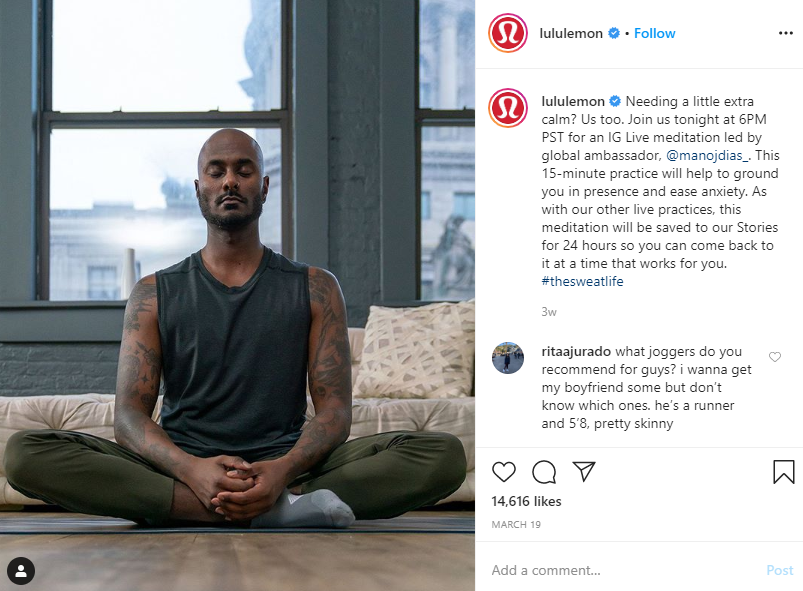
3. Adjust your messaging and stop campaigns that could come across as insensitive.
When basketball player Kobe Bryant died in an aerial crash in early 2020, Planters immediately paused their #RIPMrPeanut campaign, which featured Planters' mascot, Mr. Peanut, falling to his death in an explosion. The company knew the backlash could be strong and halted the campaign to be sensitive to their audience:
Additionally, Google is well-known for its annual April Fool's jokes, but they realized that this year there might be backlash that plays out in social media over what might seem flippant when much of the world is feeling more stress and fear than normal.
In general, make sure you are paying attention to current events and are ready to pull your posts at a moment's notice if need be. That's more important than ever in a climate where emotions are already high.
4. Start placing more emphasis on connection over content.
We are more connected than ever, but for the first time in modern history, as a global society, we're more apart than ever before as well, with so many people working from home, far from their families, and unable to travel. Even an act as simple as going to the store might be impossible or feel harrowing to people in your audience.
This is a time when pushing content out may be less meaningful for your audience than connecting with them directly.
For example, HubSpot has shifted our Facebook strategy to embrace the method of asking questions that get people talking and thinking:
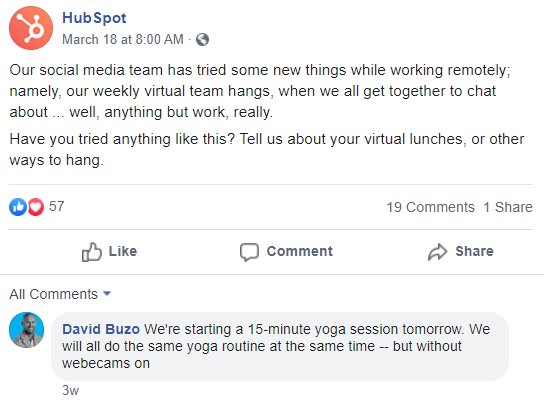
Additionally, Canva reshares and responds to their customers regularly, winning them even more love for their product:
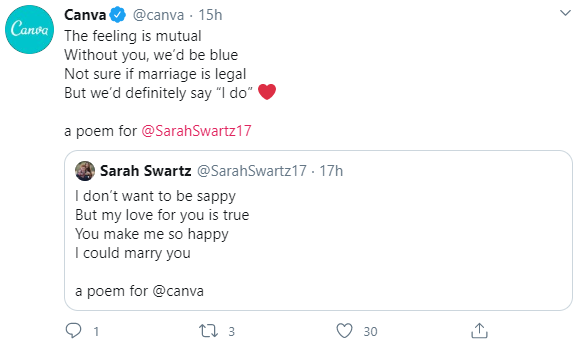
5. Keep or start being more empathetic — in your messaging, your content, your responses.
In a time when people may feel more vulnerable, it’s important to adjust your brand voice to take that into account. Exploiting a crisis situation is never a good idea. Alternatively, you'll want to ensure your brand comes across as friendly, helpful, and empathetic.
For instance, sustainable shoe company Allbirds donated shoes to workers on the front-lines of the healthcare crisis. Not only are they directly being helpful, but their messaging and interactions are empathetic and caring:
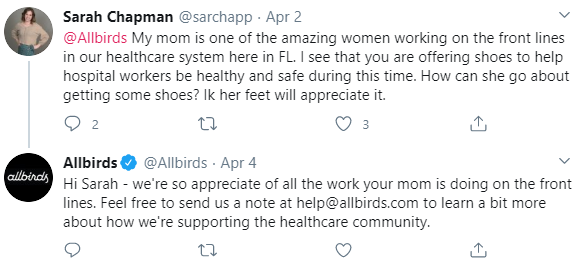
At a time when many hotels are closed, it’s somewhat hard to stay top of mind. The Sheraton Commander in Cambridge shared a photo on Instagram that is both heartwarming and and full of care:

Coca-Cola took a wildly different tactic altogether. They have a Twitter audience of 3.3 million followers, and are one of the largest brands on the platform. During this time, they're choosing to avoid posting about their product at all, and are instead resharing tweets that will inform and help people:
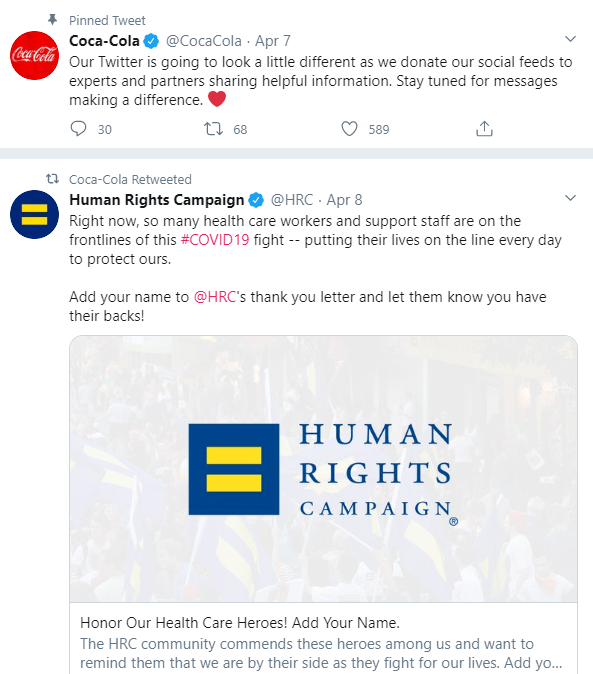
6. Stop being spammy.
This goes hand in hand with empathy and engagement. Brands that are using a push strategy for their marketing in social will not have the same results as companies that are taking a more engaging approach.
Be thoughtful of how often you are posting, and where you might have advertising that could be seen as intrusive. Adjust content to fit three main categories: how you can be informing, engaging, or entertaining your customers and fans.
7. Keep up the great social customer service.
Be cognizant of how your audience might be feeling when responding. They may need a bit more care and patience.
Nespresso has made adjustments to their customer care and are responding with well-wishes for customers as part of their customer service efforts:
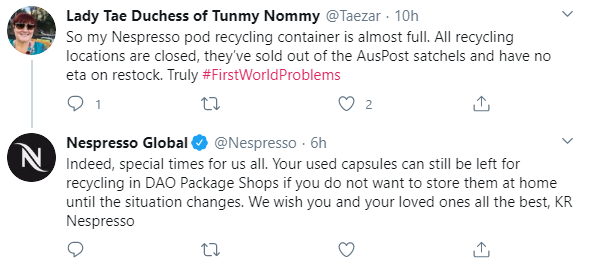
While the nuances of social media today may be a little different, the foundation of your great social media strategy still remains the same. To learn more, you can take the HubSpot Social Media Certification course, which has been recently updated with new interviews and information to help build the best marketing strategy for your business.
No comments:
Post a Comment